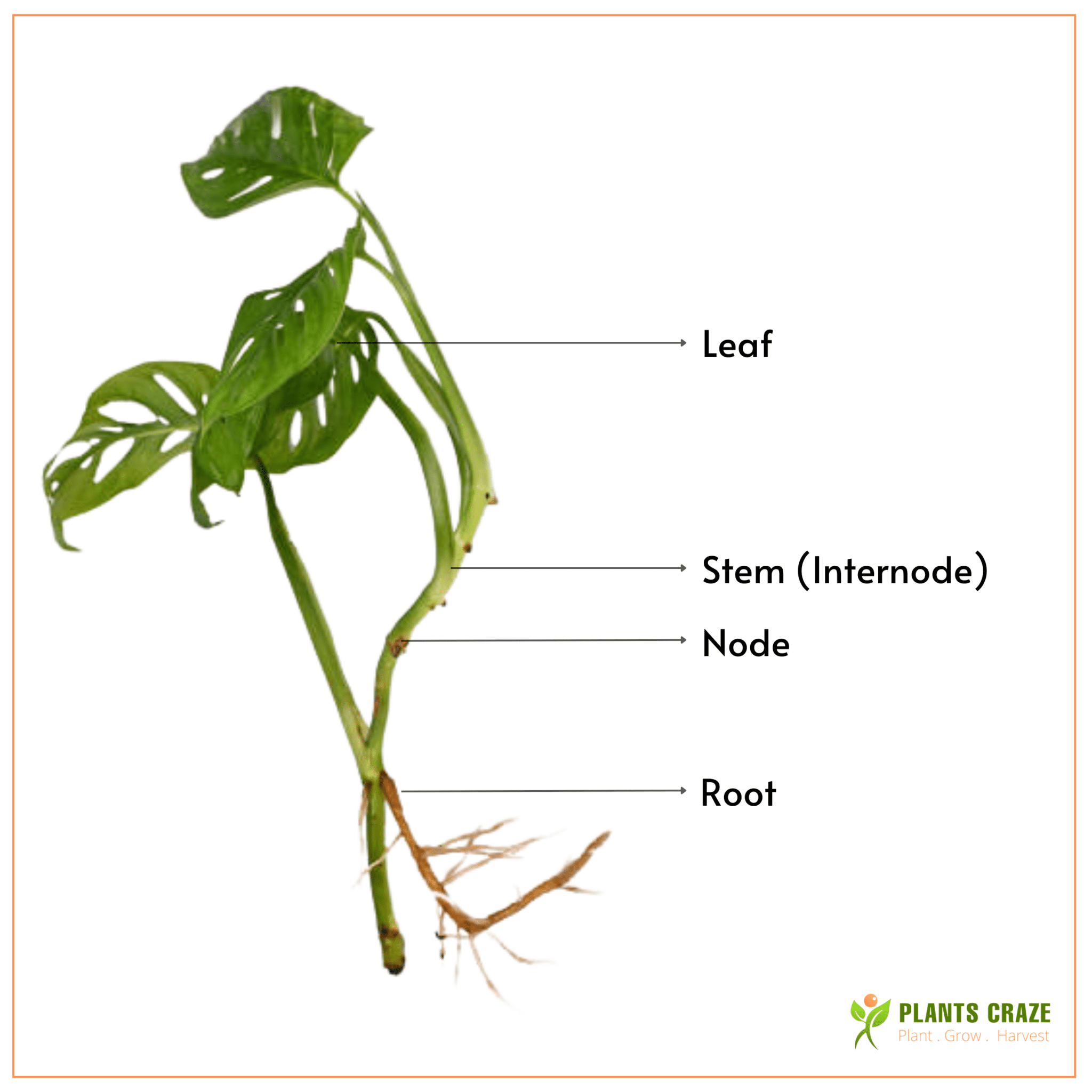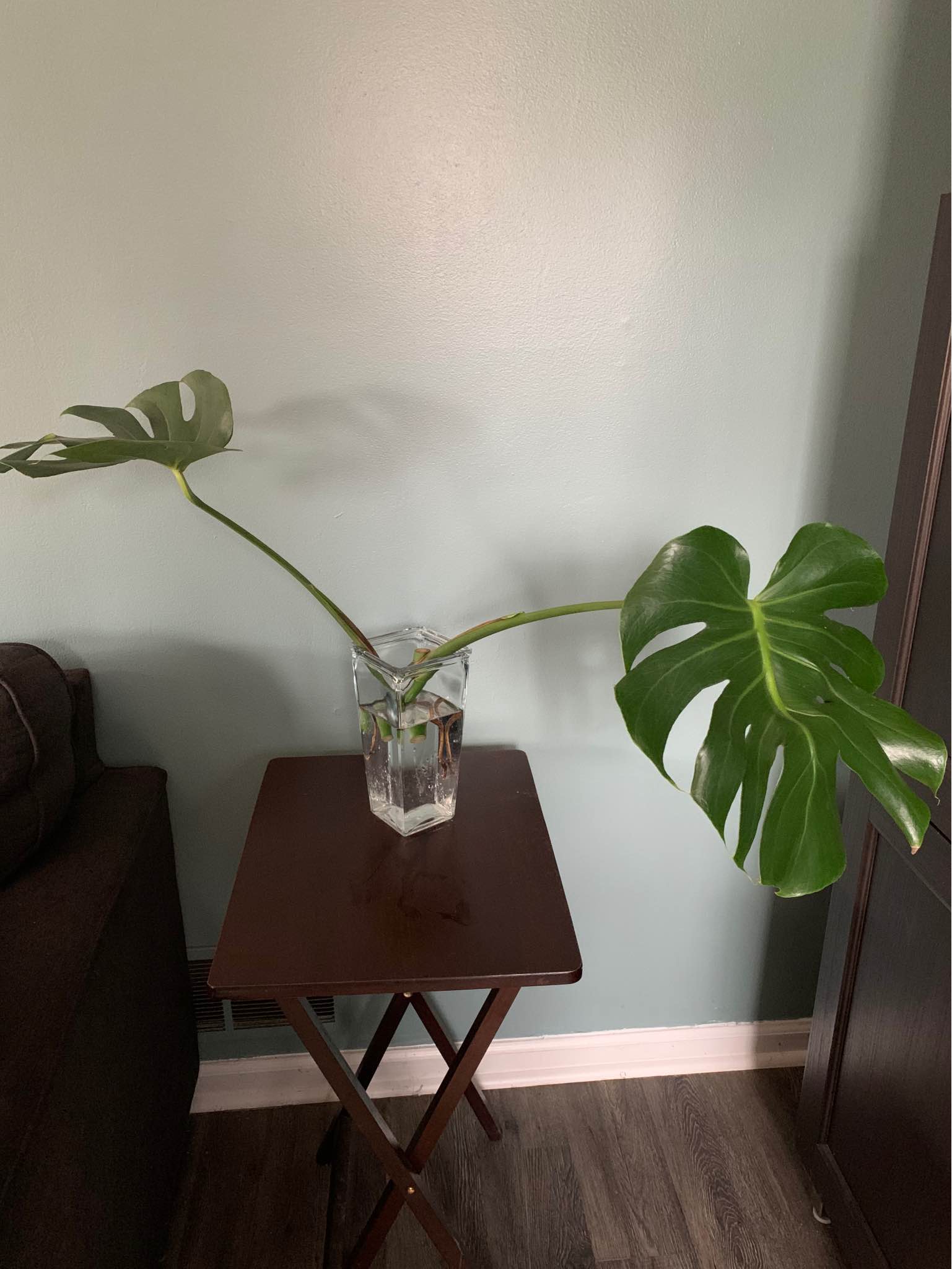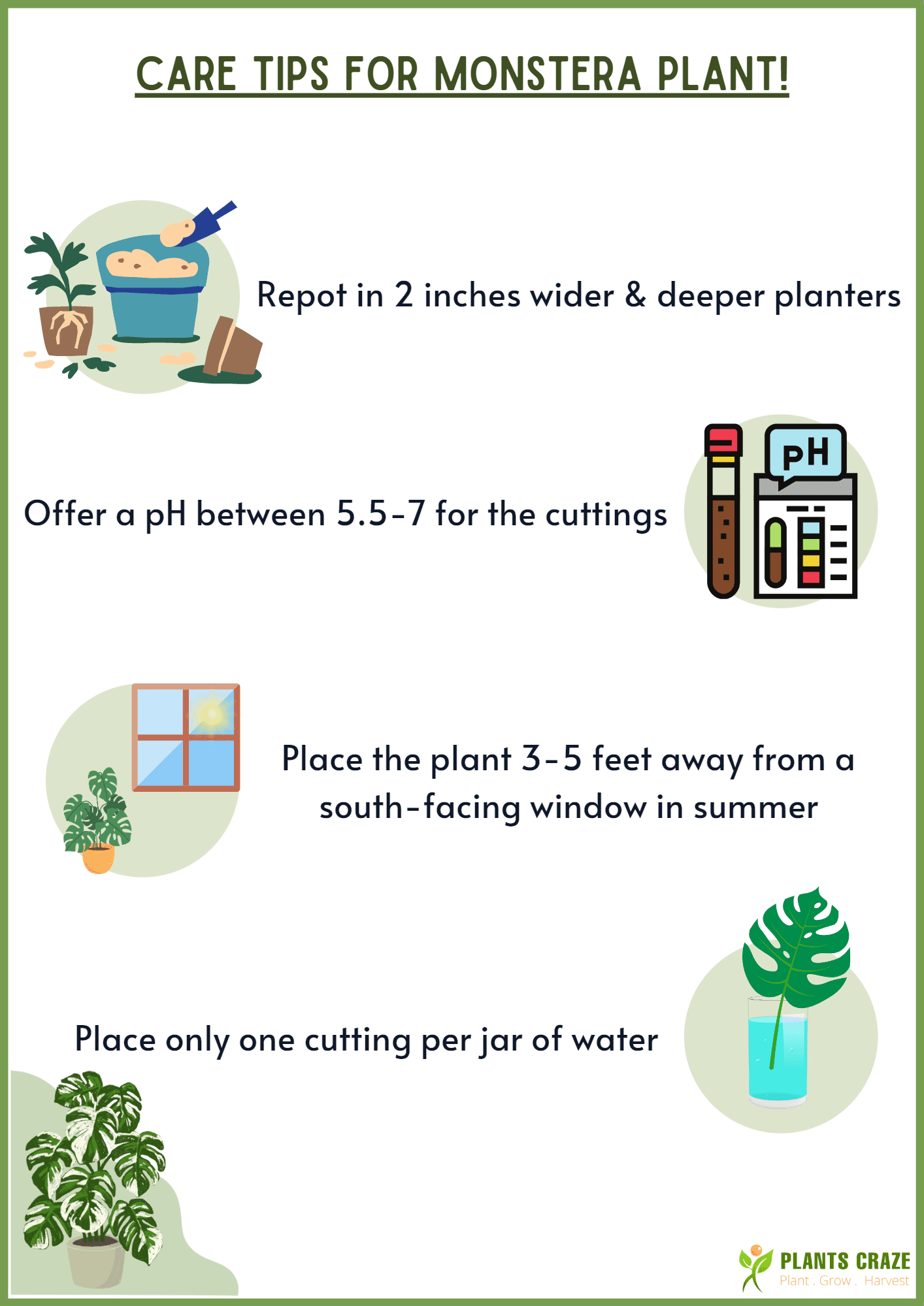Let’s make an upsetting start; it’s impossible to propagate Monstera without a node. Luckily, there are some alternatives to rely on.
Although Monstera requires nodes to grow into a new plant, dwelling on deeper insights regarding the nodes can come in handy to learn some extra ways to propagate Monstera!
Table of Contents Show
What is a Monstera Node?
Nodes are brown, circular rings visible exteriorly on the stem of Monstera.
Simply put, a node is a point of origin from where new leaves, stems, and roots grow.
The point between two nodes is called an internode, which is the main stem of the plant.
Additionally, if you put a thin section of Monstera node under a microscope and observe, you can see many cells.

Among these cells, some divide and differentiate quickly to give rise to specific organs, like new leaves, stems, and roots.
New stems grow directly above a node, while leaves grow around a node covered by a papery sheath.
Likewise, Monstera roots (aerial, aerial-subterranean, and lateral sub-terranean roots) grow in clusters along the length of each node.
Can you Propagate a Monstera Without Node?
Propagation is the method of growing a new plant from the parts of the parent or mother plant.
Aroids like Monstera can easily propagate in soil and water, a quirky way to escape the tedious fruiting and seeding process.
Additionally, to propagate Monstera, there are options, like stems, roots, and leaves, that can readily push out new roots.
But, these plant parts must harbor at least one node, if not more.
Since nodes carry special cells to grow into a whole plant, without them, Monstera cannot grow new parts.
Can a Monstera Cutting Without a Node Grow Roots?
Monstera cuttings without a node can grow roots within 2-6 weeks when you keep them in distillate water.
Leaf cuttings, at the cut point, have “special cells” with the ability to form new roots.
Similarly, leaf cuttings can stay fresh for a long time in the water, perfect for indoor decor.

Also, you can add rooting hormone to the water and entice the leaves to grow roots.
But without the node, it’s futile to expect a whole plant just from the leaves.
Can you Propagate a Leafless Monstera Node?
You can propagate a leafless Monstera node as the node is the most crucial part of Monstera to grow into a new plant.
However, the growth of the node will stunt without leaves.
So, a Monstera node with at least 2-3 small leaves or a single large leaf is apt for propagation.
Quick Tip: Take a node with multiple leaves and remove some lower leaves to expose the growing points for roots to grow.
Propagate Monstera With a Node
Mature Monstera bears several bumpy nodes along the length of their stem.
Cuttings with nodes can be placed in soil or water to grow new leaves, and these popular methods are very easy.
However, propagation is not 100% successful as there are different small things to consider.
Step 1: Choosing a Monstera Node Cutting
The appropriate time to propagate Monstera cuttings with nodes is spring and summer.
- Select a stem with 1-2 nodes and 2-3 healthy leaves about 5-8 inches long.
- Make a 45° cut on each side of the internode using sterilized pruners.
- Nodes with aerial roots can assist the plant during the propagation process. So, don’t throw them away!
- Afterward, scab the cuttings for 15-45 minutes before propagation.
Step 2: Rooting a Monstera Node Cutting
You can root the Monstera cuttings in soil and water.
Soil propagation ensures strong roots. The plant won’t suffer much shock later during the transplant, but it’s messy.
Additionally, you cannot observe the roots grow and monitor root rot.

Propagating Monstera in Water
It’s more appropriate to root the cuttings in the water and transplant them in suitable potting soil for later.
- Prepare a rooting hormone solution in a clear glass jar, per instructions on the pack.
- Ensure the node is covered with water but don’t immerse the leaves.
- Place the cuttings in bright indirect light near an east-facing window.
- Cover the cuttings and jar with a plastic bag to secure humidity and temperature.
- Change the water every 3-5 days.
- Cuttings will develop new roots within 2-6 weeks.
- Place the cuttings into the soil when the roots are about 1-2 inches long.
Transplanting Monstera in Soil
Transplant the cuttings by choosing the correct potting mix for Monstera.
- Fill a 4-6 inches wide and 5 inches-deep terracotta pot with soil.
- Dig a hole about 1-2 inches deep and place the cuttings.
- Use 1 pot per cutting and mist the soil lightly.
- Place the cuttings in dappled sunlight after covering them cuttings with a humidity dome.
- After 2-3 months, the cuttings will sprout new leaves.
Watch this video to learn about the process of Monstera propagation.
Tips to Take Care of Monstera After Propagation
Monstera cuttings have similar requirements as a full-grown Monstera plant.
- Place the plant near indirect sunshine for 6-8 hours daily.
- Maintain the temperature at about 70-80°F and humidity around 50-80%.
- Water every 1-2 weeks with distillate water and keep the soil dry between waterings.

- Feed Monstera with 20-20-20 liquid fertilizer monthly in spring and summer.
- Remove the dead or decaying leaves every spring.
- Cast pests away or keep diseases at bay by applying neem oil once the infestation is visible.
- Repot in early spring every 2-3 years when the roots poke from the pot’s drainage holes or cram at the topsoil.
FAQs About Propagating Monstera Without Node
Do All Monstera have Nodes?
All the varieties of Monstera are epiphytes with nodes for the growth of roots, helping them to cling high on the trees.
Why does my Monstera not have Nodes?
Monstera may not have nodes when they are juvenile. Only mature Monstera have nodes on their stem.
Can you Trim Monstera Nodes?
Propagating Monstera without nodes is impossible. Nodes are the growing points, and trimming them can halt the plant’s growth.
From Editorial Team
Always Propagate Cuttings with Nodes!
Monstera shows versatility in propagation if you can get your hands on cuttings that bear nodes. However, always take cuttings with more than one node to ensure success!


